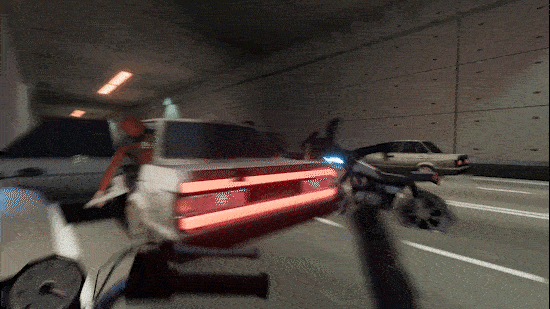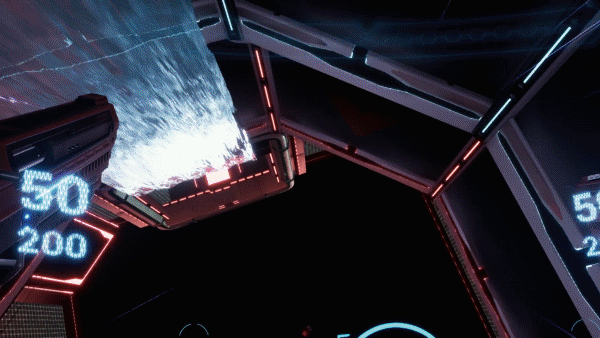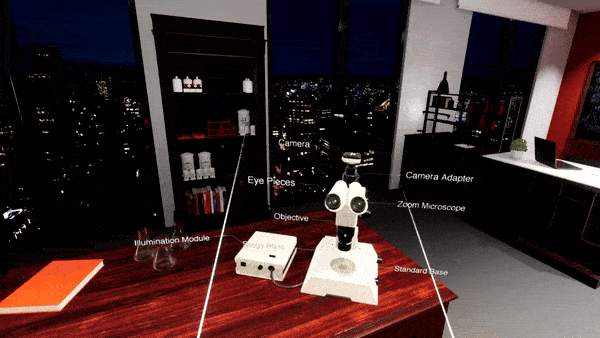Projects
Projects Expanded
PSYKO
PSYKO is a brutally-fast motorcycle combat game. Outrun and outgun while squeezing through traffic at breakneck speeds. Traffic is your arena, and danger is fuel. Ride the line between blistering pace and tactical precision.

PSYKO is a solo project I’m working on. I’ve learnt a lot over the last few years. I have a better understanding of managing scope while focusing on core value. A solo project is great for this. There’s no choice but to be succinct in design and goals. The loop here is short and tight, delivering the value quickly. These shorter loops are good for VR headsets, especially the Quest, where median playtimes are shorter than those of PC play sessions.
NeverBound
NeverBound is the gravity-shifting shooter that brings you mind-bending combat and puzzles in multi-gravity environments. You are as dangerous from below as you are from above. The rules have changed. High ground is relative.

NeverBound was my first commercial project. After buying the HTC Vive back in 2016, I built a prototype for NeverBound that helped me raise money to build it out.
Shipping this for VR was challenging, and helped improve my optimization chops. Having to dive into the rendering pipeline, the engine loop and make optimization improvements gave me deeper understanding that I’m grateful for.
This project was terribly over-scoped. I’ll come back to it at some point, but it was too ambitious for me at the time and we lacked the resources to be able to bring it past profit.
The reviews were overall quite positive, but it always suffered from a lack of content, something that people expressed often. You live and you learn.
Flappy Flappy VR
My original hypothesis for this game was that it could sell for 3 reasons:
- Flappy Bird is recognizable and has viral potential
- People will look ridiculous while playing
- The input is so simple that a small child can instantly learn
Here’s a video of Disrupt, a popular youtuber, playing it for 24 hours straight. He broke his tooth playing it. If that’s not success I don’t know what is.
Disrupt playing Flappy Flappy VR for 24 hours.
The irony here is that while NeverBound was my catalyst to raising money, it made significantly less money than Flappy did. Flappy began as a small weekend-long project. The scope grew as more gameplay and biomes were added. Localization was added after getting a few licensing deals in Korea and China. After accounting for licensing deals and arcade income, it remained light and profitable.
Vector Sector
Vector Sector is a Musical Rhythm shooter. Its inspired by Geometry Wars. The play space wraps around the player, and the environment reacts to the music, giving a fun audio-visual experience.
I loved working on this project. It never got released. We had a publisher for it right before Covid. Unfortunately they had closed down during this time.
Manufactory
Manufactory is like Factorio on steroids. You can go from humble beginnings mining your first few pieces of ore to a sprawling planet-spanning factory with trillions of machines moving trillions of products through complex logistic networks. The Factorio community already has a small obsession with “megabases”, where they try to push productivity and factory size to the limit.
This project had extremely big goals, and while we were confident we had a strong chance with the tech, all parties involved knew it was the ‘swing for the fences’ type of project.
Ultimately, while we did have a lot of this theoretically working, it put a lot of constraints on gameplay, and we felt that it would be too risky to continue to pursue. We didn’t think the gameplay would be fun, which is what matters.
Military Robotics Program
Military Robotics Program was a pivot on the above project, Manufactory.
Military Robotics Program blends the Factory/Automation (FA) and Real-Time Strategy (RTS) genres. The player builds factories that craft robot parts which are used to assemble a modular robot army. They then use their military units to conquer key territories guarded by enemy bases.
The Factory Builder mechanics function similarly to games like Factorio or Satisfactory. The player plans, builds, and optimizes their factory, in the aim of increasing their outputs. The RTS mechanics function similarly to games like StarCraft or Age of Empires.
Pivots are risky. After attempting to move into the Production round with the CMF, we were shot down. In hindsight, it was rightfully so. There’s still things to figure out for this one.
McGill Micrscope AR/VR experience - McGill BioEngineering Department
The user is able to proceed around a virtual simulation of a BioEngineering lab, while operating some of the equipment. The goal here was to have a virtual space for students to learn about the workings of the hardware, like microscopes, which are typically quite expensive.
The AR version of the application instead allowed the user to select hardware and place it in their own environment and then virtually operate it.

This was a nice change of pace from games. We got to build an exact replica of the Olympus XYZ, a microscope I was familiar with.